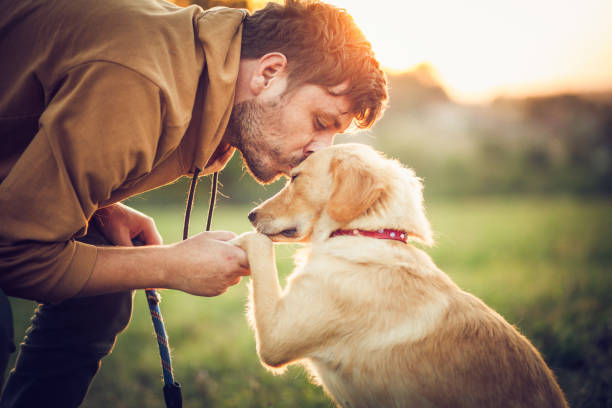The Dos and Donts of Puppy Training: Building a Strong Foundation

Puppies are undeniably adorable bundles of joy, but without proper training, they can quickly become chaotic and unruly. As a responsible dog owner, it is your duty to establish a strong foundation for your furry friend. In this article, we will explore the dos and don'ts of puppy training, providing you with practical tips and expert advice to ensure a harmonious relationship with your four-legged companion.
1. Harness the Power of Positive Reinforcement: Did you know that puppies respond better to rewards rather than punishment? By using positive reinforcement techniques such as treats, praise, and play, you can motivate your puppy to exhibit good behavior. Instead of scolding them for chewing on furniture, redirect their attention to a chew toy and reward them when they engage with it. Remember, a happy pup is a well-behaved pup!
2. Consistency is Key: Dogs thrive on consistency, so establish clear rules and boundaries from day one. Use the same commands consistently, such as "sit" or "stay," and ensure that all family members are on board with the training methods. Avoid confusing your pup by giving them mixed messages. With time and repetition, your furry friend will begin to understand what is expected of them.
3. Socialization is Essential: Just like humans, dogs are social beings. Exposing your puppy to various environments, people, and other animals from an early age is crucial for their overall development. Take your pup to the park, enroll them in puppy classes, or arrange playdates with other friendly dogs. This exposure will help them become well-adjusted, confident, and less prone to behavioral problems in the future.
4. Leash Etiquette: Walking your puppy on a leash is an important aspect of training. Start by introducing them to the concept gradually, allowing them to explore with a loose leash. If they pull, stop in your tracks and wait for them to come back to your side. Reward them with praise and treats when they exhibit the desired behavior. Soon enough, your puppy will understand that they must stay by your side during walks.
5. Timeouts and Diversion: Puppies, much like toddlers, can get overly excited or exhibit unwanted behavior when they are bored. Instead of scolding them, consider implementing timeouts or diversion tactics. When your pup becomes too rowdy or starts misbehaving, gently remove them from the situation and give them some quiet time to calm down. Alternatively, distract them with a puzzle toy or engage them in a training exercise. This way, you redirect their energy into more positive outlets.
6. Patience is a Virtue: Rome wasn't built in a day, and the same goes for puppy training. It's important to have realistic expectations and be patient with your furry friend. Understand that they are still learning and will make mistakes along the way. Avoid resorting to punishment or harsh training methods, as they can damage the trust between you and your pup. Instead, focus on reinforcing positive behaviors and celebrating small victories.
7. Seek Professional Help if Needed: If you find yourself struggling with your puppy's behavior or if you feel overwhelmed, don't hesitate to seek professional help. Trainers and behaviorists can provide invaluable guidance tailored to your specific situation. Remember, it's never a sign of weakness to ask for assistance; rather, it showcases your commitment to providing the best care for your beloved pet.
Now that we've covered the essential dos and don'ts of puppy training, it's time to delve deeper into other critical topics: crate training, potty training, preventing separation anxiety, and teaching basic commands. Stay tuned for the upcoming sections, where we will provide step-by-step guidance and actionable tips to set both you and your puppy up for success. Together, let's build a strong foundation of trust, love, and obedience that will shape a lifelong bond with your furry friend.
Section 2: Crate Training Made Easy
Section 3: Potty Training: From Mess to Success
Section 4: Preventing Separation Anxiety: Your Pup's Peace of Mind
Section 5: Teaching Basic Commands: Building Communication with Your Puppy